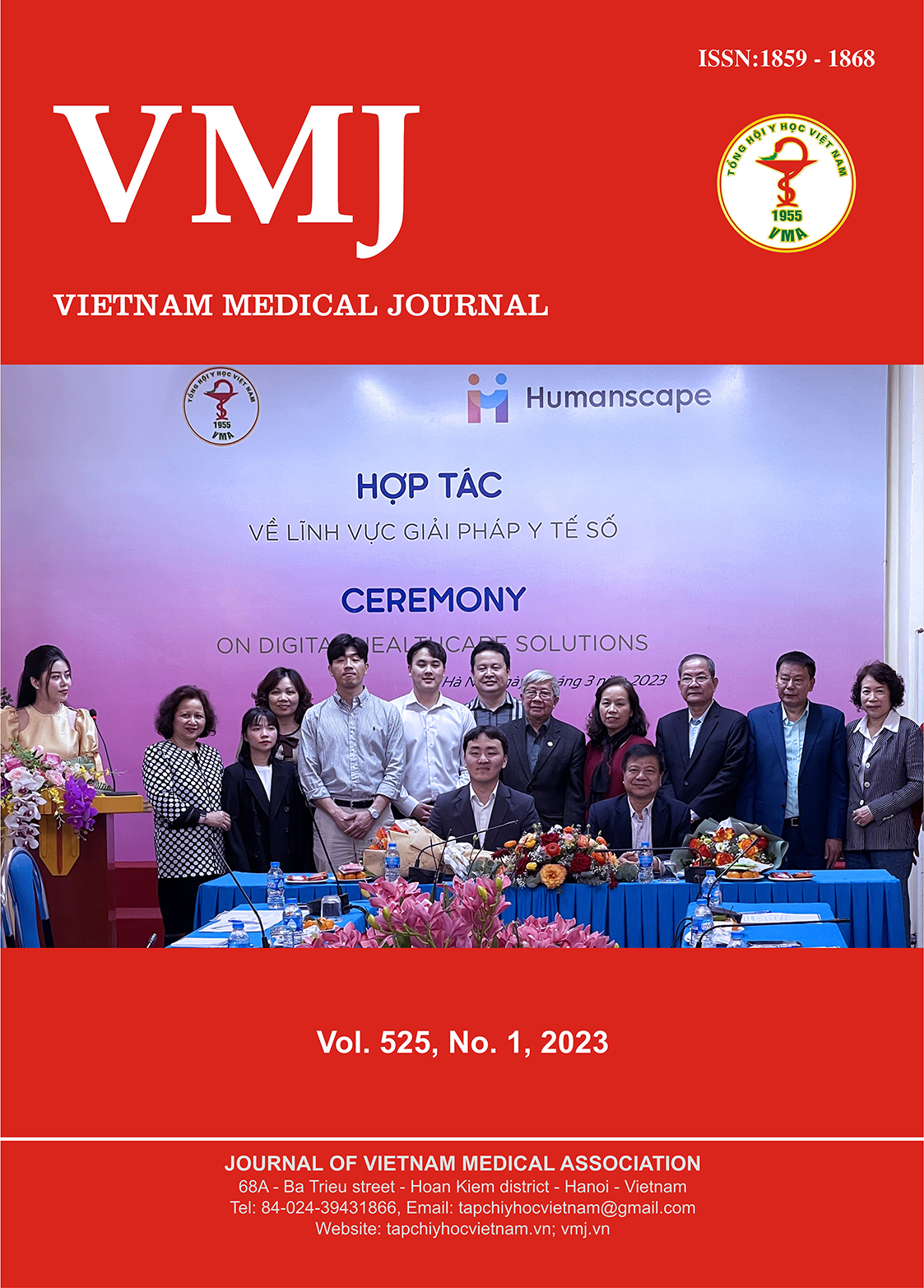THE PERFORMANCE OF GPRI, FIB-4 AND LIVER ELASTOGRAPHY FOR DIAGNOSING LIVER FIBROSIS IN PATIENTS WITH CHRONIC HEPATITIS B
Nội dung chính của bài viết
Tóm tắt
After assessing liver fibrosis stages of 83 patients with chronic hepatitis B using GPRI, FIB-4 and ElastPQ, we have the following conclusions:
GPRI had a good accuracy for diagnosing significant liver fibrosis and advanced fibrosis with AUROC > 0.7. With a cut-off of 0,38, GPRI had a high sensitivity and NPV for diagnosing significant fibrosis (> 80%). With a cuf-off of 0,59, GPRI had a very high sensitivity and NPV for diagnosing advanced fibrosis (> 90%). FIB-4 had sub-optimal accuracy for diagnosing significant fibrosis with AUROC of 0,64 and advanced fibrosis with AUROC of 0,65. With a cut-off of 2,34 for diagnosing significant fibrosis (≥F2): FIB-4 had very high specificity (92%), and NPV of 65%. With a cut-off of 2,65 for diagnosing advanced fibrosis (≥ F3): FIB-4 had a very high specificity and and also a very high NPV (>80%). ElastPQ had excellent accuracy for diagnosing both significant and advanced fibrosis (AUROC was 0,84 and 0,83, respectively). For diagnosing significant fibrosis: with cut-off of 6.07, ElastPQ had sensitivity of 86%, specificity 71%, PPV 68% and NPV 87%; For diagnosing advanced fibrosis: using cut-off of 9,43, ElastPQ had sensitivity of 67%, specificity 97%, PPV 87% and NPV 90%
All 3 tools GPRI, FIB-4 and ElastPQ had significant positive correlation with liver fibrosis stage (p < 0,001). Among them, liver elastography using ElastPQ had the strongest correlation (r = 0,62, p < 0,001).
Chi tiết bài viết
Từ khóa
ElastPQ, APRI, FIB-4, GPRI, liver fibrosis, cirrhosis, transient elastography, point shear wave elastography
Tài liệu tham khảo
2. Guzman-Aroca F, Reus M, Berna-Serna JD (2011), “Reproducibility of shear wave velocity measurements by acoustic radiation force impulse imaging of the liver: a study in healthy volunteers”, Journal of ultrasound in medicine : official journal of the American Institute of Ultrasound in Medicine, 30 (7):975-979.
3. Jang HJ, et al (2019), “Assessment of liver fibrosis with gadoxetic acid‑enhanced MRI: comparisons with transient elastography, ElastPQ, and serologic fibrosis markers”. Abdominal Radiology (2019) 44:2769-2780.
4. Ledinghen VD (2008), “Transient Elastography (Fibroscan)”, Gastrœntérol Clin Bio, 32, 58-67.
5. Lee JE, et al (2017), “Non-invasive assessment of liver fibrosis with ElastPQ: comparison with transient elastography and serologic fibrosis marker tests and corelation with liver pathology results” . Ultrasound in Med. & Biol., Vol. 43, No. 11, pp. 2515-2521, 2017.
6. Lemoine M, et al (2015), “The gamma-glutamyl transpeptidase to platelet ratio (GPR) predicts significant liver fibrosis and cirrhosis in patients with chronic HBV infection in West Africa”. Gut 2016;65:1369-1376.
7. Li Y, Cai Q, et al (2016), “Development of algorithms based on serum markers and transient elastography for detecting significant fibrosis and cirrhosis in chronic hepatitis B patients: Significant reduction in liver biopsy”. The Japan Society of Hepatology, 2016.
8. Ma JJ, et al (2013), “Evaluation of seven noninvasive models in staging liver fibrosis in patients with chronic hepatitis B virus infection”. European Journal of Gastroenterology & Hepatology 2013, 25:428-434.
9. Mare R, et al (2017), “The value of ElastPQ for the evaluation of liver stiffness in patients with B and C chronic hepatopathies”. Ultrasonics 77 (2017) 144-151.
10. Ming-Jian L, et al (2019), “Diagnostic accuracy ofγ-glutamyl transpeptidase-to-platelet ratio for predictinghepatitis B-related fibrosis: a meta-analysis”. European Journal of Gastroenterology & Hepatology 2019, 31:599-606.
11. Q. Li, et al (2016), “The Gamma-Glutamyl-Transpeptidase to Platelet Ratio Does not Show Advantages than APRI and Fib-4 in Diagnosing Significant Fibrosis and Cirrhosis in Patients With Chronic Hepatitis B”. Medicine. Volume 95, Number 16, April 2016.
12. Thang HT (2006), "Chronic Hepatitis", Gastrointestinal and Hepatobiliary Disease, Medical publisher , p. 282-297.
13. Tuan NV (2008), "Sample size estimation", Evidence-based Medicine, Medical publisher, p. 93-95.
14. Wai CT, Greenson JK, Fontana RJ, et al (2003), “A simple noninvasive index can predict both significant fibrosis and cirrhosis in patients with chronic hepatitis C”, Hepatology, 38:518-526.
15. Wang H, Xue L, Yan R, et al (2013), “Comparison of FIB-4 and APRI in Chinese HBV-infected patients with persistently normal ALT and mildly elevated ALT”, Journal of viral hepatitis, 20 (4):e3-10.
16. Wang R, Zhang Q, et al (2016).” Gamma-glutamyl transpeptidase to platelet ratio index is a good noninvasive biomarker for predicting liver fibrosis in Chinese chronic hepatitis B patients”. Journal of International Medical Research 2016, Vol. 44(6) 1302-1313.
17. WHO - Guidelines for the prevention, care and treatment of persons with chronic hepatitis B infection (2015).
18. WHO. 2017. Hepatitis fact sheet


